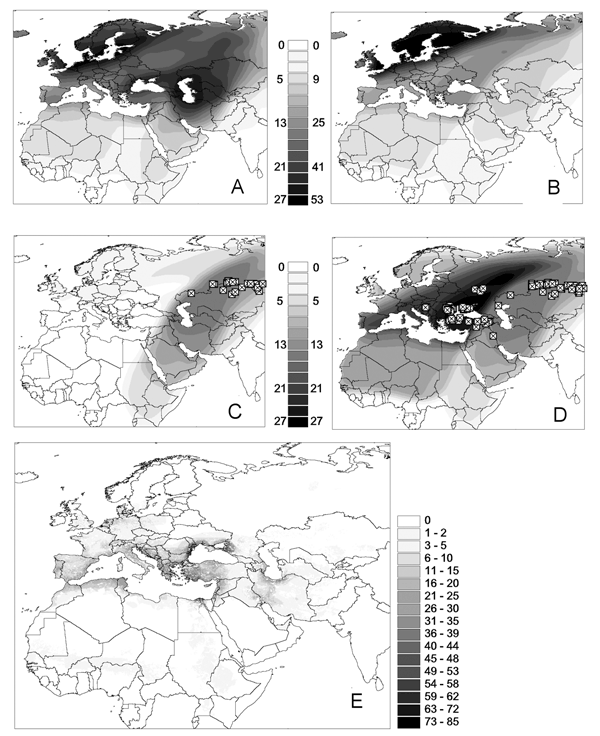Volume 12, Number 11—November 2006
Perspective
Anatidae Migration in the Western Palearctic and Spread of Highly Pathogenic Avian Influenza H5N1 Virus
Figure 2

Figure 2. Distribution overlay of migratory flyways of Anatidae bird species in the western Palearctic: each pixel of gray shading indicates the number of species that include the area as part of their flyway. A) All species with an equal weight (indicative of species diversity by pixel). B) Flyways weighted according to their population (indicative of anatid populations). Population-weighted distribution overlay for flyways intersecting highly pathogenic avian influenza (HPAI) H5N1 virus records are shown for C) July through August and D) July through December. E) The maps displayed present the product of map B by the overlay of anatids wintering distribution and by the log10 of poultry density, as an index of the risk for transmission of HPAI H5N1 virus from anatids to domestic poultry in their wintering sites under the affected flyways.